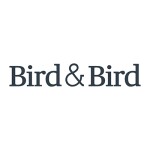One of the enduring peculiarities of the unregistered Community design regime, introduced almost 20 years ago by the Community Design Regulation 6/2002, is that one fundamental question remains unanswered: where a design is first disclosed outside of the EU, is that design still capable of attracting unregistered Community design (UCD) protection, or does that first non-EU disclosure destroy the novelty of any subsequent EU disclosure, such that UCD cannot arise in the first place?
This matters because EU and non-EU businesses frequently need to first exhibit their new products at trade fairs or other events outside of the EU. Given the importance of UCD protection, it is of considerable surprise that this question still remains unanswered by the CJEU.
Judicial interpretations
Some national courts have wrangled with the question however. Back in 2008, the German Federal Supreme Court decided in Gebäckpresse that the disclosure relied on as qualifying for a UCD needed to take place geographically within the EU territory – in other words, a non-EU first disclosure would deprive the designer of UCD protection.
The same question arose more recently in the UK in 2019 in the IPEC case of Beverly Hills Teddy Bear Company ([2019] EWHC 2419). In that case, the designs were first displayed publicly at a trade fair in Hong Kong SAR in October 2017, and then later exhibited at the Nuremberg Toy Fair within the EU in January 2018. The question for the court therefore was whether the earlier Hong Kong SAR disclosure served to destroy the novelty of the subsequent EU disclosure meaning that the designs could not attract UCD protection.
Whilst recognising the “highly persuasive status” of the German court’s decision in Gebäckpresse, the IPEC felt the answer was not sufficiently clear and made a reference to the CJEU. Unfortunately for practitioners, the case was settled before these questions could be answered by the CJEU.
The impact of Brexit
The answer to this question matters even though the UK has exited the EU. This is because, to fill the gap left by the removal of UCD protection from the UK, the UK introduced a new UK unregistered design right: the so-called supplementary unregistered design (SUD) which effectively mirrors the UCD right but for the UK only.
Whilst the position with regard to first disclosure of UCDs might not be known with certainty until the CJEU expressly decides it, the position on first disclosure with regard to SUDs seems to be clearer: an SUD will only be established by first disclosure of the design in the UK.
The position therefore seems to be that the designer must decide: disclose first within the EU and get unregistered design protection in the EU but not the UK, or vice versa. First disclosure outside both the EU and the UK would appear to sacrifice protection in both territories (although designers can of course obtain registered design protection).
Questions to answer
What then of first disclosures which take place online, for instance on a website, a social media post or live streamed? Are such disclosures, which effectively become visible to the public around the world simultaneously, deemed to be first disclosed everywhere all at once, or conversely not actually first disclosed anywhere? Or does it matter where the poster who uploaded the content, or even where the servers which hosted it, were located?
It will be interesting to see how the courts in both the EU and UK deal with these questions.
Ewan GristPartner, Bird and BirdE: ewan.grist@twobirds.com












